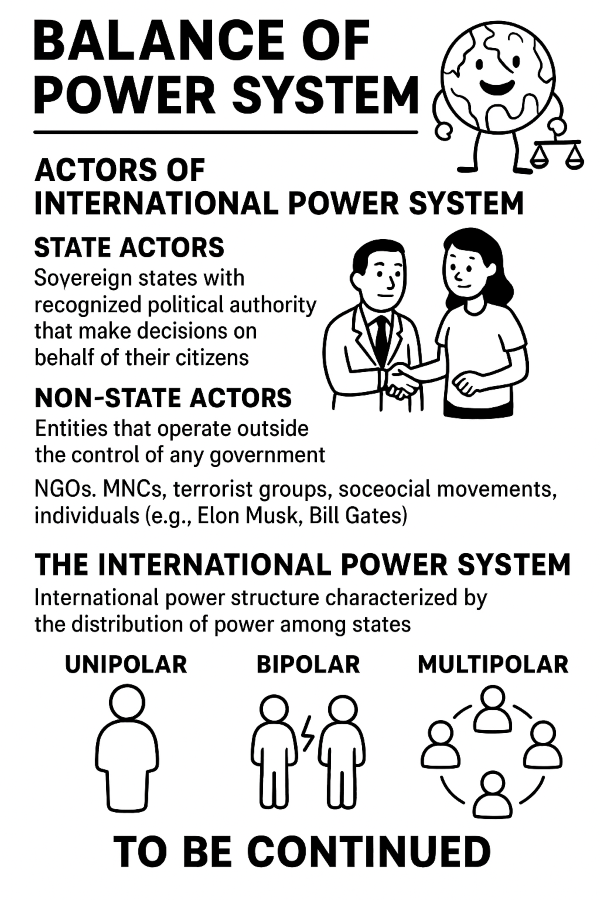INDIA’S ZERO EMISSION AND ECO FRIENDLY ENERGY STRATEGIES STILL LONG WAY TO GO ,DESPITE IMPRESSIVE PROGRESS – By N.S.Venkataraman

The recent report released by OPEC’s World Oil Outlook 2025 has predicted that by the year 2050 , crude oil would replace coal as India’s key energy source. Obviously, OPEC expects that India’s dependence on fossil fuel for energy source will continue to remain high in one form or the other .
Target and progress:
Government of India has fixed an ambitious Viksit Bharat target for the year 2047 to make India a developed nation . This initiative calls for rapid and comprehensive development across multiple sectors, which would inevitably increase the demand for energy and fuel . It is a good target as far as it goes. The pace of progress achieved so far to reach the target is certainly impressive .There is today worldwide recognition that India is one of the fastest growing economies in the world .
Emission target :
During the global climate conference , India’s Prime Minister has assured that India would achieve zero emission target by the year 2070. Obviously, to achieve such dream like target , India has to start curtailing the use of fossil fuel and completely eliminate the use of fossil fuel by the year 2070.
Rise in consumption of fossil fuel :
Inspite of government of India’s efforts to boost the production of non fossil fuel energy source such as solar, wind power , the steady increase in fossil fuel consumption such as coal, crude oil and natural gas is happening for use in power generation, as transport fuel and so on.
In 2024, India’s coal production saw a significant increase, reaching around 1047 million tonne compared to around 997 million tonne in the previous year, marking a 4.99% growth. Further, In the fiscal year 2024-25, India’s coal import was around 243.62 million tonne
In 2024, India’s crude oil import increased by 4.2% to 242.4 million tonne, As India’s crude oil production is virtually stagnant over the years , import dependency for crude oil rose from 88.6% in March 2024 to 89.1% in March 2025.
In 2024, India’s LNG import increased to a record 27 million tonne , a 20% year-on-year rise, as the domestic natural gas production is virtually remaining stagnant.
Use of coal and petroleum fuel as energy source result in emission of noxious gases such as sulhur dioxide, nitrous oxide and carbon dioxide. During the storage and transportation of natural gas, methane leak take place and such methane pose serious emission issue
Increasing use of such fossil fuel for power generation ,for transportation, which cause huge emission , is totally at odds with the target of reducing the emission to zero level by 2070
Focus on non fossil fuel for power generation :
India is focusing on renewable energy generation and battery storage, green hydrogen and promotion of electric vehicles to cut emissions and reduce import dependence on crude oil and natural gas.
India’s total installed power capacity reached 476 GW as of June,2025, with a significant shift towards non fossil fuel sources. India has achieved a major and impressive milestone reaching 50 percent of its installed electricity capacity from non fossil fuel sources such as solar , wind , nuclear and hydro power and so on. Renewable power generation capacity will continue to grow with India expected to add 32 GW of renewable power this year.
While India’s renewable power capacity is increasing, India’s electricity generation continue to remain carbon-intensive (713 grams CO2 per kWh) than the global average (480 gCO2/kWh), with coal accounting for around 70 percent of power generation
While capacity for non fossil fuel energy source such a solar , wind power are increasing, the capacity utilisation of solar and wind power is only around 20 percent due to various limitations. In such scenario, the actual production of renewable power is only less than 30% in India’s total power needs. The rest is met by fossil fuel.It appears that this situation will continue , particularly in the context of India’s energy requirement increasing at 7% per annum.
Focus on non fossil fuel for transport :
The consumption of petrol in India for automobiles is steadily increasing at around 6.4% year on year ,while diesel use have been increasing at around 2%..
In the case of transportation sector, government of India is betting big on electric vehicles. Electric vehicles presently constitute less than 8% of all the vehicles running in India. Further, there have been reports about the lack of viability of electric trucks due to high initial costs and difficulties associated with the charging. CNG trucks are more preferred than electric trucks at the moment. Further, the power required for charging battery of electric vehicles , expected to reduce emission and dependence on fossil fuel, mostly come from power generated using fossil fuels. This is similar to the act of cutting off nose to spite the face
Government of India have been taking steps to increase the biofuel production that include ethanol and biodiesel for running automobiles . Significant initiatives have taken place particularly in producing ethanol based fuel and using it in automobiles , India’s biofuel production rose by 27 % year on year While the shift towards ethanol blending is gaining momentum, there are challenges related to ensuring adequate ethanol supply and managing potential impacts on other sectors. . Government of India has gone to the extreme level of using food grains such as rice and grains as feedstock for ethanol production to be used as biofuel. In any case, considering the steady increase in the use of automobile and increasing demand for auto fuel, any increase in production of biofuel at best can meet only the increasing year on year demand and not the entire demand. In other words, use of petroleum fuel for automobiles is likely to continue and increase.
Uncertain prospects for green hydrogen :
India’s green hydrogen industry is gaining significant attention , driven by the National Green Hydrogen Mission, which aims to achieve a 5 million tonne per annum production capacity by 2030. This mission has a financial outlay of ₹19,744 crore, with a focus on creating an enabling ecosystem for production, demand creation and infrastructure development.
Green hydrogen, while holding significant promise for decarbonization, faces uncertain prospects due to high production cost and challenges in scaling up production and infrastructure. These factors contribute to a gap between announced proposals and actual implementation.
With regard to green hydrogen project, one has to keep the fingers crossed at this time and stage and future of the hydrogen economy remains unpredictable.
Alternate Options
Algae biofuel:
One of the obvious solutions is to implement projects for generation of algae biofuel. Algae crop has around 20 to 25% oil content and is a quick growing crop and need only sun shine and carbon dioxide as inputs and some minor quantity of nutrients. Tropical conditions in India are appropriate for cultivation of algae crop and even waste water would be adequate for cultivation . Algae crop can be cultivated in waste land, which are plentifully available in India and algae crop would not come in conflict with the food crops with regard to land requirement or fresh water requirement. Biofuel produced from algae crop can be blended with diesel.
Algae biofuel can provide a win win situation for India’s energy sector. Unfortunately, Government of India has not paid due attention to this opportunity.
Biofuel from Jatropha
A few years back, jatropha has been considered as appropriate for production of biofuel and an euphoria was raised in India about the prospects of jatropha to reduce import dependence on crude oil.
Jatropha tree has life span of around 40 years. It can start producing seeds within 3 years of planting. The seeds contain upto 40% oil. Jatropha can be successfully grown in tropical conditions.
Earlier, Government of India promoted Jatropha cultivation under various initiatives.. The National Biofuel Policy, launched in 2008, included Jatropha as a key feedstock for biofuel production, Unfortunately, the idea was not pursued and it ended up as a half hearted strategy.
Ethanol biofuel from sugar beet
Sugar beet crop is extensively cultivated in Europe, Russia and other regions.. As against sugarcane crop, sugar beet requires only half cultivation time and require half quantity of water. The yield of molasses from sugar beet crop is almost on par with the yield of molasses from sugarcane crop.
While the government of India is going to the extent of using food grain rice to produce ethanol, it is surprising that it has not taken any steps to promote sugar beet crop in a big way, that would produce sugar and ethanol.
Methanol from municipal solid waste :
India imports more than 3 million tonne per annum of methanol, which is produced from natural gas . In view of the lack of natural gas availability from domestic source, India has to import methanol , spending huge outflow of foreign exchange
A few places are known to be producing methanol from municipal solid waste (MSW) abroad, including a plant belonging to Canadian company named Enerkem. Research indicates the potential for decentralized methanol production from municipal solid waste in India . Unfortunately, this project has also not been pursued.
India has huge quantity of municipal solid waste posing disposal problem. Producing methanol from municipal solid waste is a strategy for clean India campaign and to reduce import dependence on fossil fuel.
What likely future scenario?
All said and done, government’s present plans to promote eco friendly renewable energy, green hydrogen e vehicles etc. are unlikely to be adequate to reduce India’s increasing consumption of fossil fuel and increasing import dependence on fossil fuel as well as emission issue.
Steps initiated by Government of India to cut emission and reduce import dependence on fossil fuel seem to be only marginally preventing the increase in emission level and import dependence. The ground reality is that the emission level and import dependence will continue to increase in spite of government efforts, in the absence of boldly examining the appropriate and alternate options for India.
There is need for out of box thinking . The number of suggestions given in this article to reduce emission and import dependence on fossil fuel deserve immediate attention and action from Government of India. These suggestions are not new and have been suggested by experts several times during the last ten years.
Drawing good suggestions from well meaning experts to the attention of top bureaucrats and ministers , some of whom may not have domain experience in technical field , is the big problem today in India.
























